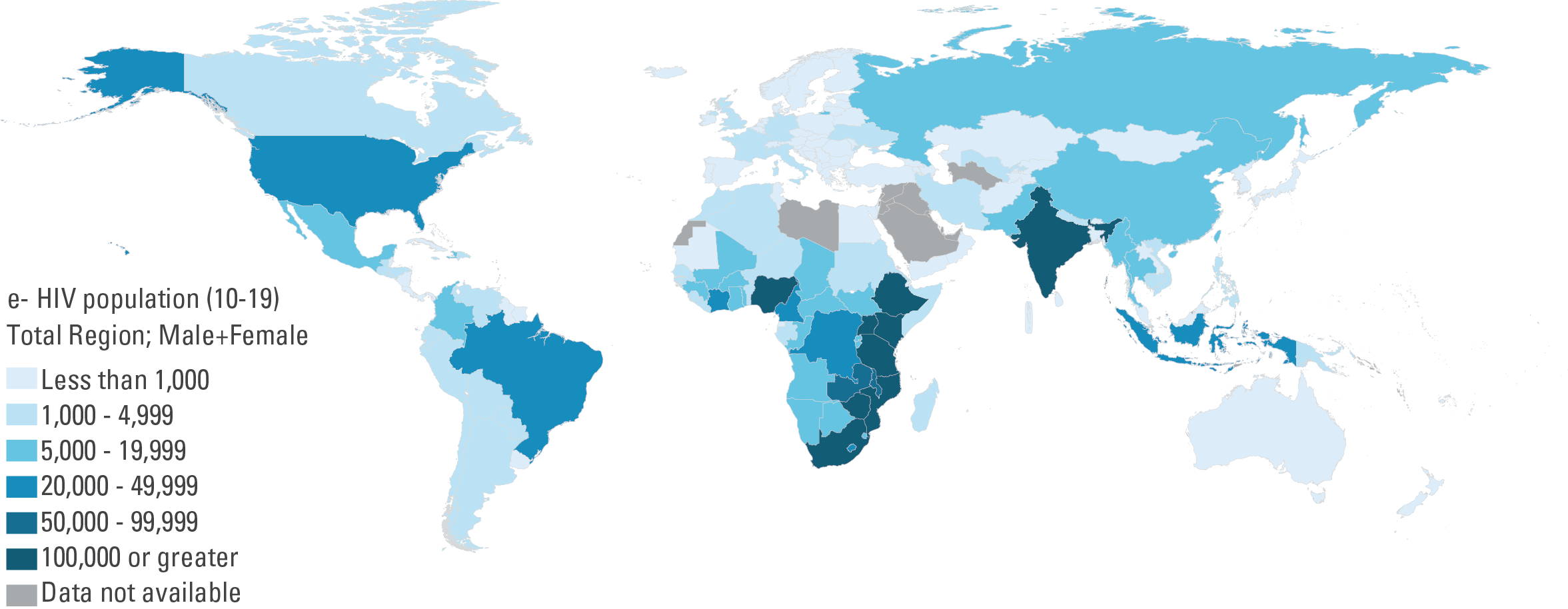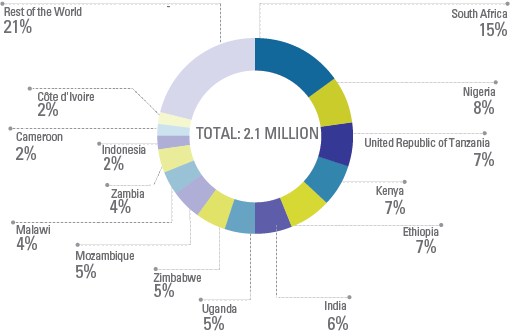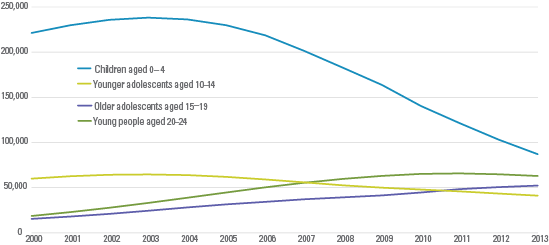Adolescents and young people represent a rapidly growing share of people living with HIV worldwide. In 2013 alone, 670,000 young people between the ages of 15 to 24 were newly infected with HIV, of whom 250,000 were adolescents between the ages of 15 and 19. If current trends continue, hundreds of thousands more will become HIV-positive in the coming years.
As part of a global response, the UN General Assembly High-level Meeting on AIDS in 2011 reviewed progress on reversing the epidemic. A new Political Declaration on HIV/AIDS was drawn up, with the adoption of new commitments and bold new targets. One of them is to reduce sexual transmission of HIV by 50 per cent by 2015. This will not happen unless young people have the knowledge and skills to avoid risk behaviour.

Epidemiology of HIV and AIDS Among Adolescents: Current Status, Inequities, and Data Gaps
The JAIDS Supplement is a key source of evidence that will inform collective efforts towards ending the adolescent AIDS epidemic. The series presents a collection of reviews on adolescents analyzing current evidence and experience from programmes to highlight how to improve HIV-specific outcomes.
A lack of data at the country level continues to stymie an effective national response on how best to promote HIV prevention. Most countries have no or insufficient data on HIV prevalence and/or sexual behaviour trends among young people, including several countries with exceptionally high HIV prevalence in Southern Africa. This limits a more comprehensive global analysis of trends.
GLOBAL AIDS RESPONSE PROGRESS REPORTING/UNIVERSAL ACCESS
In an effort to harmonize data collection and minimize the reporting burden on countries, UNAIDS, WHO and UNICEF have developed a joint reporting tool. The tool, which has been translated into several UN languages, combines the Global AIDS Response Progress Reporting and Universal Access reporting on the health sector response to HIV/AIDS. Countries that have not yet begun using the tool are advised to download the latest version. Accompanying guidelines support countries in using the tool and provide detailed descriptions of the indicators used.
- For Global AIDS Response Progress Reporting/Universal Access reporting guidelines, click here.
- To view the latest version of the reporting tool, click here.
- To view a list of indicators, click here.
SPECTRUM/EPP ESTIMATE MODELLING
UNAIDS, WHO and UNICEF are using Futures Institute's modelling software, Spectrum/EPP, to generate estimates, which support policy decisions concerning public health. Spectrum includes modules for HIV estimates and projectors.
NATIONALLY REPRESENTATIVE SURVEYS
Multiple Indicator Cluster Surveys (MICS), Demographic and Health Surveys (DHS), AIDS Indicator Surveys (AIS), reproductive health surveys, sexual behaviour surveys and other nationally representative surveys are currently used to collect data on HIV and AIDS.




